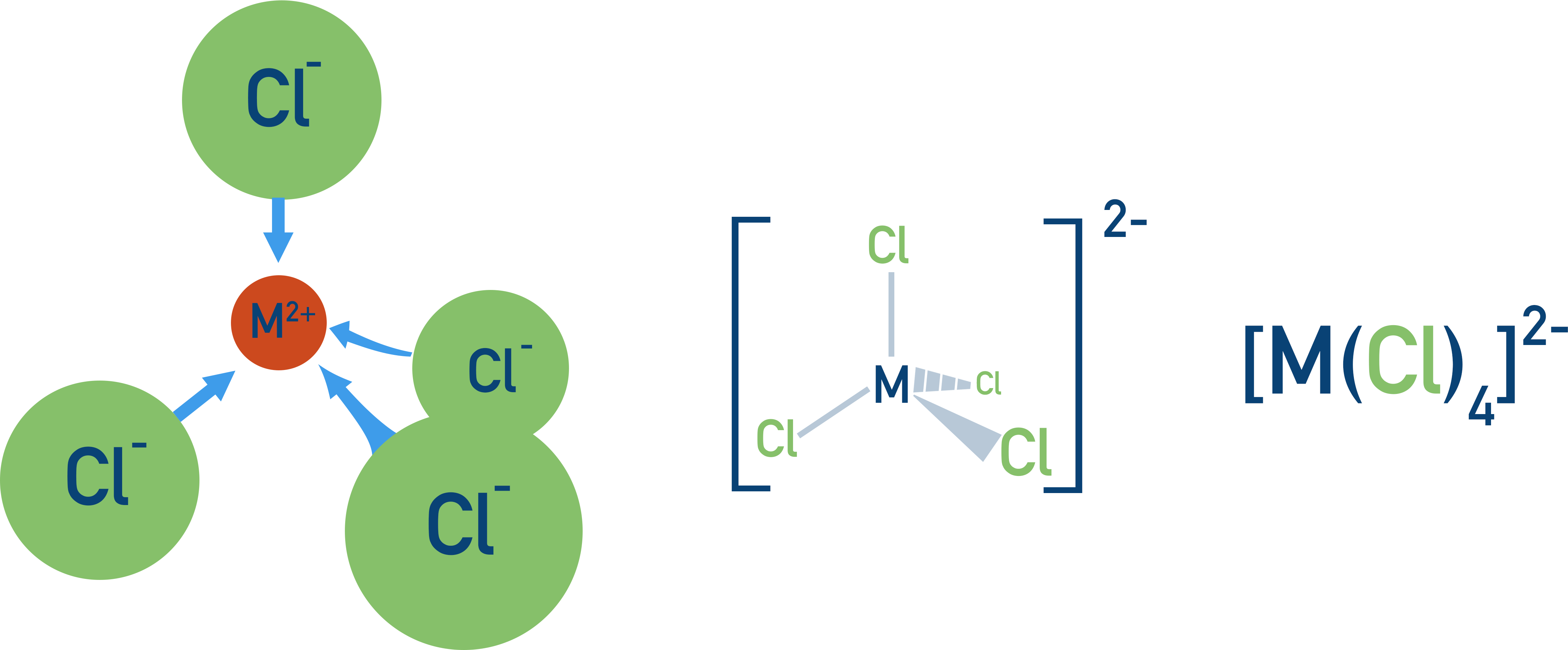Video Tutorial Ligand Substitution
Quick Notes Ligand Substitution
- Ligands in a metal complex ion can be substituted for another type of ligand.
- Ligands that have a similar size can be substituted with no change to the co-ordination number of the complex ion.
- If the ligands involved in substitution are different sizes, a change in co-ordination number can occur.
- Chloride ions are larger ligands than water molecules so only four can fit around a metal ion – a change in co-ordination number occurs when chloride ions are substituted for water ligands (usually six to four).
- Substitution occurs stepwise and the stability of the complex ion that would be formed from another substitution determines whether a further substitution will happen (this is why only partial substitution sometimes occurs, for example with copper and ammonia).
Full Notes Ligand Substitution
The ligands that co-ordinately bond and surround a metal ion can be swapped; this is a ligand substitution.
For example, [Ni(H2O)6]2+ can react with ammonia to form [Ni(NH3)6]2+. Water and ammonia are similar sized molecules, so the same number of each (six) can fit around the metal ion. Each ligand can form one co-ordinate bond, which means the co-ordination number of the complex remains the same (six).

Not all ligands are a similar size. Chloride ions are much larger than water and ammonia ligands, so six chloride ions simply cannot fit around the metal ion as easily. To avoid ‘bumping’ into each other, only four chloride ions can get close enough to a metal ion to make co-ordinate bonds.

For example, [Co(H2O)6]2+ reacts with chloride ions to form [CoCl4]2-. Note that the number of co-ordinate bonds made with metal ion changed from six to four, meaning the co-ordination number of the complex has changed from six to four. The charge of the complex ion has also changed, as each chloride ion has a charge of negative one (2+ from Co and 4 x 1- from each of the chloride ions gives an overall charge of 2-).
Why do ligand substitution reactions change the colour of a complex ion?
Colour arises in complex ions because of the d-orbitals in the metal ion becoming split into high and low energies. Electrons can become excited and move from the low to high energy orbitals by absorbing specific wavelengths of visible light. Changing the ligands in the complex ion changes the gap between d-orbitals and the wavelengths of light absorbed. See Transition Elements, Colour.
Why does only partial substitution sometimes occur?
Even though this goes beyond A-level Chemistry, it is a constant area of confusion for students.
Ligands are substituted one at a time in such reactions and it is the stability of the complex ion formed that determines whether another ligand will be substituted. Each substitution step has a stability constant associated with it. Stability should increase overall if another substitution is to occur.
For various reasons, sometimes the stability of the ion that would be formed with another substitution is lower than the stability of the partially substituted ion, meaning further substitution does not occur.
We’ve launched our new site! 🎉
Course-specific notes with built-in search!
AP • A-Level (AQA • CIE • Edexcel • OCR) • IB • NCERT 11 + 12
over 750+ new pages and 3,500 images.
Visit the new homepage
